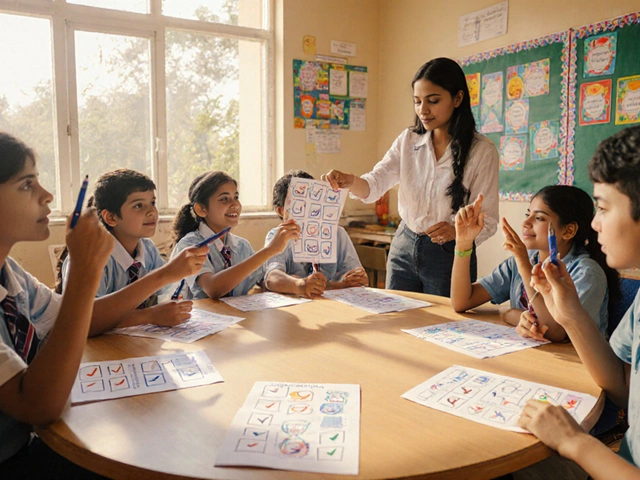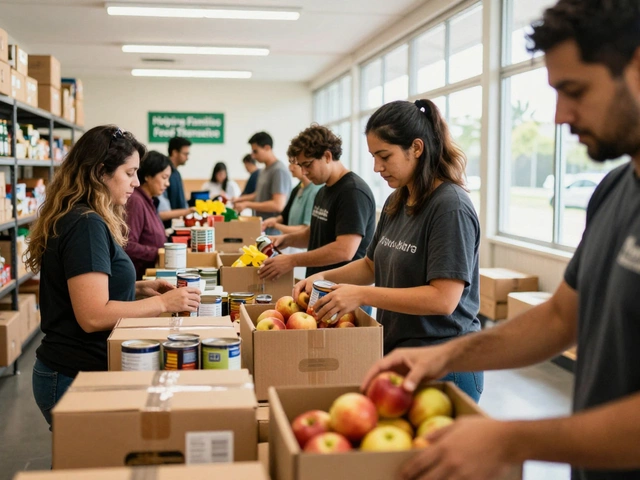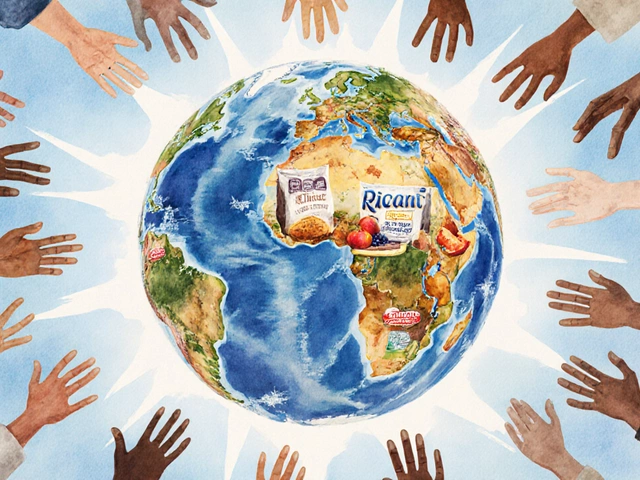Outreach teams are the hidden engines behind every successful cause, project, or campaign. Whether you're trying to clean up Wellington's beaches, promote a community event in Auckland, or raise awareness about mental health, none of it gets done without clear outreach roles. Did you know, in one 2021 survey by Nonprofit HR, nearly 60% of outreach efforts flopped simply because roles weren’t clear or people were wearing too many hats? There are a dozen ways to mess up outreach, but if you get the right people in the right positions, you're halfway to a win.
Breaking Down Outreach Roles: Who Does What?
The heart of any outreach campaign is its people. But handing out leaflets or replying to emails? Hardly. There’s a whole ecosystem here. At the head sits the outreach coordinator—think of her as the project manager with a finger in every pie. She sets timelines, keeps everyone in the loop, and juggles crises like it’s an Olympic sport. Her day might start by rallying a team for an early-morning event in Civic Square and end by sorting out last-minute media interviews.
Sliding into the mix are comms specialists, folks gifted at turning tangled ideas into messages that get noticed. They work closely with graphic designers, social media managers, and sometimes even volunteer photographers to spin updates that aren’t just seen, but shared. Ever seen a tweet about an event explode overnight? That’s them, doing their magic backstage.
The volunteer manager is no less important. She knows every volunteer’s strengths, what makes them tick, and how to keep them coming back when motivation dips. She sets up rotas, mediates when tempers flare, and ensures everyone’s trained—because just tossing someone a clipboard and hoping for the best isn't outreach, it’s chaos.
And then you’ve got the boots on the ground—the field workers or community connectors. These are the people who show up rain or shine, knock on doors, run workshops, and chat with strangers. They know local shops by name and remember what snacks work best at meetings (hint: nobody wants more carrot sticks).
Data analysts and admin support round out the crew. Their job is less visible, but absolutely crucial. They track attendance, measure engagement, collect feedback, and turn piles of numbers into info the whole team can use—not just to brag, but to improve. Below you'll see a table of typical outreach roles and some of their key responsibilities:
| Role | Main Tasks |
|---|---|
| Outreach Coordinator | Project management, scheduling, partner liaison |
| Communications Specialist | Messaging, email campaigns, social media |
| Volunteer Manager | Recruitment, training, volunteer relations |
| Field Worker / Community Connector | Direct engagement, facilitation, event setup |
| Data Analyst/Admin Support | Reporting, records, feedback collection |
Skipping or overloading any of these roles can send the whole effort sideways. In one Wellington charity I worked with, the volunteer manager left for just a month and the roster unraveled—suddenly, more than half the promised volunteers didn’t show. The key lesson? Outreach depends on the right roles, clearly defined.
Why Clarity in Roles Makes or Breaks Outreach
Picture your last group project gone off the rails—nobody sure who’s leading, too many cooks in the kitchen, people pointing fingers. Outreach is no different when roles aren’t clear. If the communications person is also expected to coordinate volunteers and handle the admin, you’re setting them up to drop balls—even if they’re brilliant. Most projects that fail to reach people don’t lack passion, they lack structure.
Let’s talk about context. In New Zealand, especially with diverse communities across the North and South Islands, engagement looks different everywhere. In urban Wellington, people want quick, digital-first updates, but down the road in Petone, knocking on doors and chatting over a cuppa still works best. That’s why field workers and community connectors are invaluable—they adapt, translate messaging, and bridge gaps the comms team may not see from behind their screens.
But structure isn’t just about preventing chaos—it’s about creating impact. Teams with solid logistics can handle curveballs: the weather turns, a speaker cancels, you get a last-minute donation (yay, but now what?). Everyone knows their lane, so reacting is quicker and less frantic. It also helps with reporting back to funders, a step many dread, but can’t skip. Imagine being asked: "So how many did you reach, what worked, and what will you do next time?" With strong admin support, you’ve got numbers and stories at your fingertips, not just a guess.
Besides, good outreach structure helps fight burnout. When people know exactly what’s expected, and have backup when the workload spikes, they stick around. Staff and volunteers, when surveyed, rate recognition and manageable workloads higher than perks like free pizza or hoodies. And trust me, nothing builds goodwill like having some actual time off after a big event because you know someone else can cover the next shift.

Tips for Building Effective Outreach Teams
Think just finding keen people is enough? Not quite. The magic comes down to strategy. You want a mix—folks with big ideas and others nailing the details, those who connect online and those who shine in person. Ask candidates about their best and worst outreach days, not just their resumes. People’s stories reveal more than bullet points.
Documenting each role is a must. Use real words, not gobbledygook—clear, short position descriptions help people see if it’s a fit. When training new team members, pair them up. A seasoned comms specialist mentoring a newbie means less rookie mistakes and smoother integration.
Trust is non-negotiable. Good teams don’t just work together, they trust each other to get the job done. If your field worker needs help rerouting volunteers mid-event, they should feel comfortable asking, knowing someone’s got their back. Regular check-ins help—over coffee, not just emails. Keep people connected, especially in hybrid or remote setups. In Wellington, groups that switched to monthly in-person check-ins post-pandemic saw retention jump by 40%—who knew a couple of biscuits and some honest chat could work wonders?
Another game-changer: share the "why" behind the outreach. People rally around purpose. If the message matters, volunteers sign up and stay committed even when it rains sideways or the tech fails. It’s more than just tasks—every role contributes to the mission. When people see that, and see each other’s impact, energy and creativity skyrocket.
And here's a tip—flexibility beats rigidity every time. Sometimes the volunteer manager steps up to run an event when the coordinator’s struck down by the flu. Cross-training helps. Even better, it gives people a taste of other roles, which often sparks new ideas on making things smoother in the future.
Outreach Role Challenges and Solutions
Every outreach effort faces curveballs. The first big one is turnover. People move, priorities shift, or life just gets busy. That’s why it’s worth building a pipeline—always have new folks shadowing the pros, not just scrambling to fill holes. Another common pain: role confusion. Someone’s not sure if they should talk to the media, chase up volunteers, or just stick to their spreadsheet. Weekly catchups, even quick ones, solve heaps of problems before they blow up.
No outreach team is immune to resource gaps. Maybe you’re missing a data nerd, or your best community connector just moved to Dunedin. Get creative—tap universities, offer micro-volunteer slots (just two hours a week), and call on local businesses for short-term secondments. Most people feel good lending their skills to a cause, especially if their employer supports it.
Sometimes, the team or the community just burns out. If engagement is stalling, switch it up. Rotate roles, introduce new tech tools (like group messaging apps or digital scheduling boards), and celebrate even small wins. In Wellington, a group fighting litter burnout invited the community to vote on "snazziest clean-up outfit"—silly, but participation jumped by a third afterwards. People crave connection and, sometimes, a bit of play.
Tracking data can be dry but vital. Start simple—a shared Google Sheet for event turnout, reasons people say "yes" or "no" to volunteering, what snacks got eaten (seriously, stop buying the kale chips). Patterns will emerge, guiding your next steps. One big charity cut catering costs by 20% after realizing exactly zero people bothered with the vegan wraps. That’s useful data.
The *most important* outreach roles tip? Never treat any position as "lesser." Every email answered, every call-back made, every ride shared matters for momentum. People want to feel valuable. Regularly ask for feedback—not just in big annual surveys, but casually. After an event, invite the team for coffee or a quick Zoom to swap stories about what worked (and what flopped). Sharing the learning gives a sense of shared direction and sharpens everyone’s skills.
In the end, whether your outreach goal is to fill a stadium or just help out a neighbour, how you define and support your team makes all the difference. The right people, in the right roles, with the right support—everything starts there.





